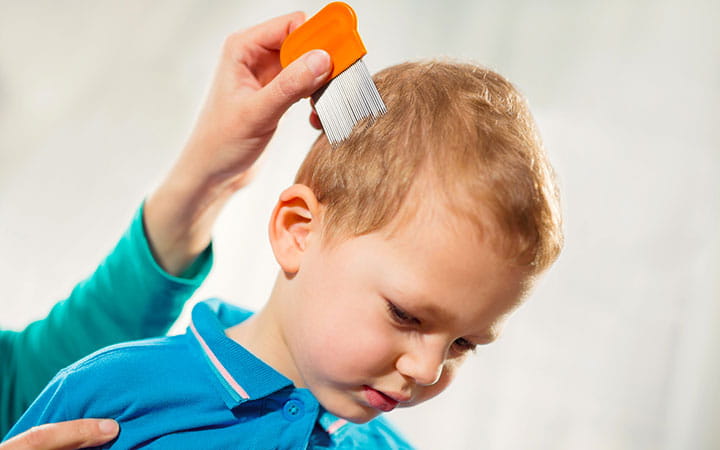What You Need to Know About the Facts of Lice
September 23, 2015
 University Hospitals Rainbow Babies & Children'sExperts in Children's Health
University Hospitals Rainbow Babies & Children'sExperts in Children's Health

Each year, head lice get into the hair of 6 to 12 million kids, ages 3 to 11.
What Are Lice?
Lice are tiny wingless insects that live on a person’s scalp and feed on their blood. About the size of a sesame seed, lice lay eggs called nits, which they glue to hairs, close to the scalp.
Symptoms of Head Lice
Your child may have head lice if he or she complains of:
- A tickling feeling in the hair, like something is moving
- An itchy scalp
- Sores on the head caused by scratching
How to Check for Lice
Carefully part your child’s hair with a comb and look for the insect’s eggs. Lice eggs, laid in the hair close to the scalp, look like tiny white or yellow ovals and often are mistaken for dandruff flakes.
How Head Lice Are Spread
Head lice are mainly spread by direct head-to-head contact, which can be common among kids during play at school, camp, day care or slumber parties.
How to Reduce Your Child’s Risk
Encourage your child not to share items that touch the head, like hairbrushes, pillows and hats, and to avoid head-to-head contact while playing with other kids.
Head Lice Myths, Busted!
- Head lice cannot jump or fly from head to head.
- Kids diagnosed with live head lice at school do not need to be sent home early. They can go home at the end of the day and return to class after treatment has begun.
- Getting head lice is not a sign of dirty hair or poor hygiene.
How to Treat Head Lice
1. Kill the insects. Apply an over-the-counter or prescription medication that will kill lice and nits. Follow the instructions on the label. Comb dead and any remaining live lice out of the hair using a fine-toothed nit comb.
2. Check the hair of family members and close contacts, like babysitters and your child’s close friends, for head lice. Keep checking family members for two weeks to be sure the lice are gone.
3. Clean any items your child has worn or used in the past 48 hours. Machine wash clothes and bedding in hot water. Also vacuum carpet and furniture.
Sources: Ohio State Department of Health; Centers for Disease Control and Prevention, American Academy of Family Physicians, American Academy of Dermatology
Tags: Children's Health, Parenting


